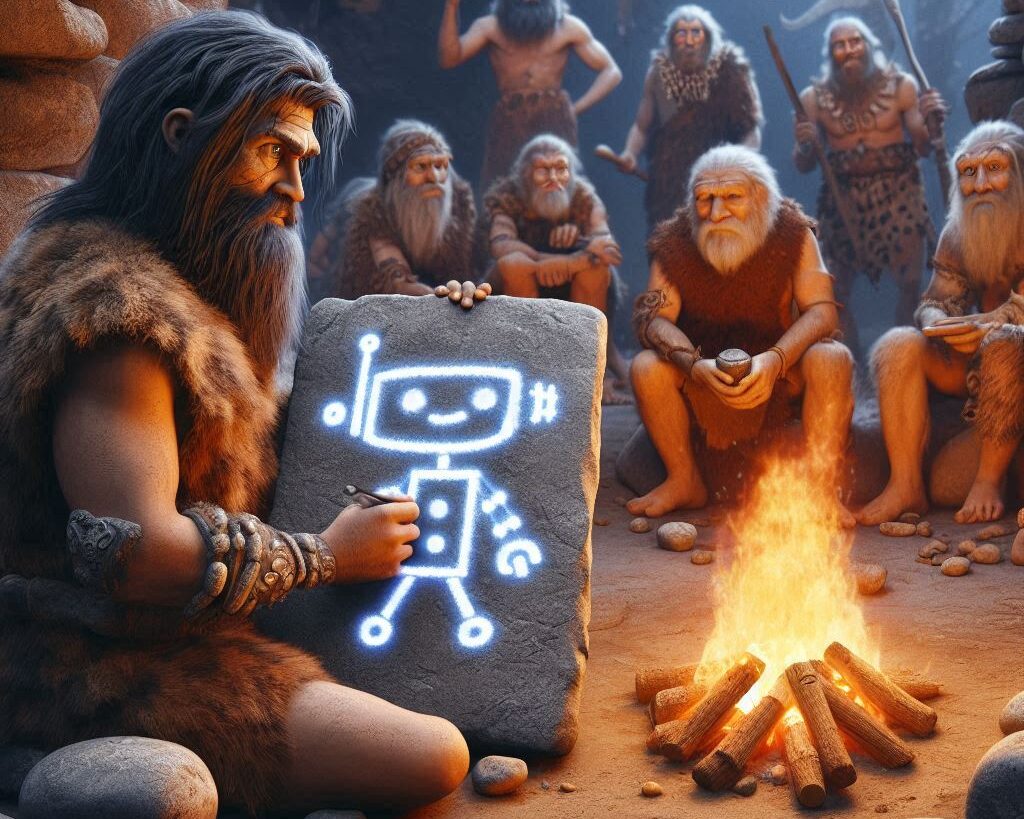Artificial Intelligence (AI) has become an integral part of our modern world, influencing everything from smartphone applications to complex scientific research. But how did we get here? The history of AI is a fascinating journey that spans decades, filled with breakthroughs, setbacks, and visionary thinkers who dared to dream of machines that could mimic human intelligence.
The Seeds of Artificial Intelligence
The concept of artificial intelligence has roots that stretch back far beyond the digital age. Ancient myths and stories from various cultures often featured automatons or mechanical beings with human-like qualities. However, the true genesis of AI as we know it today began in the mid-20th century.
The Dartmouth Conference: Birth of a Field
In 1956, a pivotal moment occurred in the history of AI. The Dartmouth Conference, organized by John McCarthy, Marvin Minsky, Nathaniel Rochester, and Claude Shannon, marked the official birth of AI as a field of study. This summer research project aimed to explore ways to make machines solve problems and improve themselves. The term “Artificial Intelligence” was coined during this conference, setting the stage for decades of research and development.
Early Optimism and the Golden Years
The period following the Dartmouth Conference was characterized by high optimism and rapid progress. Researchers made significant strides in areas such as:
- Problem-solving: Programs like the General Problem Solver (GPS) developed by Herbert Simon, J.C. Shaw, and Allen Newell showed promise in tackling complex problems.
- Natural Language Processing: Joseph Weizenbaum’s ELIZA program, created in 1966, simulated a psychotherapist and was one of the first chatbots, sparking discussions about machine understanding.
- Robotics: The first industrial robot, Unimate, was installed in a General Motors factory in 1961, marking the beginning of AI’s practical applications in manufacturing.
During this time, governments and corporations invested heavily in AI research, fueled by the belief that human-level AI was just around the corner.
The AI Winter: Challenges and Setbacks
Despite the initial enthusiasm, the field of AI faced significant challenges in the 1970s and 1980s, leading to what is now known as the “AI Winter.”
Limitations of Early AI
Several factors contributed to the slowdown in AI progress:
- Computational power: The computers of the time lacked the processing capability to handle complex AI algorithms effectively.
- Data scarcity: Machine learning, a crucial aspect of AI, requires vast amounts of data, which was not readily available then.
- Fragmented knowledge: AI systems struggled with common-sense reasoning and lacked the broad understanding that humans possess.
Funding Cuts and Public Skepticism
As the initial promises of AI failed to materialize quickly, funding began to dry up. Government agencies and corporations became skeptical of AI’s potential, leading to budget cuts and a shift in focus away from AI research.
Expert Systems: A Silver Lining
Despite the overall downturn, the 1980s saw the rise of expert systems – AI programs designed to emulate the decision-making ability of human experts in specific domains. These systems found applications in fields like medicine and finance, keeping the flame of AI research alive during challenging times.
The Renaissance of AI
The 1990s and early 2000s saw a resurgence in AI research and development, driven by several key factors.
The Rise of Machine Learning
Machine learning, a subset of AI that focuses on creating systems that can learn and improve from experience, gained prominence. This approach proved more flexible and adaptable than earlier rule-based systems.
Big Data and Increased Computing Power
The digital revolution led to an explosion of data and significant improvements in computing power. This combination provided the fuel and engine necessary for advanced AI algorithms to flourish.
Notable Milestones
Several high-profile achievements reignited public interest in AI:
- Deep Blue: In 1997, IBM’s Deep Blue chess computer defeated world champion Garry Kasparov, demonstrating AI’s potential in complex strategic thinking.
- DARPA Grand Challenge: In 2005, a self-driving car successfully navigated a 132-mile course in the Mojave Desert, showcasing AI’s potential in autonomous vehicles.
- Watson: IBM’s Watson system won the quiz show Jeopardy! in 2011, highlighting advancements in natural language processing and information retrieval.
The Deep Learning Revolution
The 2010s marked the beginning of the deep learning era, a transformative period in AI history.
Neural Networks and Deep Learning
While neural networks – AI systems inspired by the human brain – had been around since the 1950s, they experienced a renaissance thanks to:
- Improved algorithms: Techniques like backpropagation were refined, allowing for more effective training of neural networks.
- GPUs: Graphics Processing Units, originally designed for video games, proved excellent for parallel processing tasks required by neural networks.
- Big data: The abundance of digital data provided the vast training sets necessary for deep learning models.
Breakthroughs in AI Capabilities
Deep learning led to significant advancements in various AI domains:
- Computer Vision: Convolutional Neural Networks (CNNs) dramatically improved image recognition capabilities.
- Natural Language Processing: Models like BERT and GPT series achieved human-like performance in language understanding and generation tasks.
- Reinforcement Learning: AI systems learned to master complex games like Go, as demonstrated by DeepMind’s AlphaGo victory over world champion Lee Sedol in 2016.
AI in the Modern Era
Today, AI has become an integral part of our daily lives, often working behind the scenes in ways we might not even realize.
Ubiquitous AI
AI technologies are now commonplace in various sectors:
- Personal Assistants: Siri, Alexa, and Google Assistant use AI to understand and respond to voice commands.
- Recommendation Systems: Streaming services and e-commerce platforms use AI to suggest content and products.
- Healthcare: AI aids in diagnosis, drug discovery, and personalized treatment plans.
- Finance: AI algorithms power high-frequency trading and fraud detection systems.
- Transportation: Self-driving cars and optimized logistics rely heavily on AI technologies.
Ethical Considerations and Challenges
As AI becomes more powerful and pervasive, important ethical questions have emerged:
Privacy: The data-hungry nature of AI raises concerns about personal information protection.
Bias: AI systems can perpetuate or amplify existing societal biases if not carefully designed and monitored.
Job displacement: The automation potential of AI has sparked debates about its impact on employment.
Accountability: Determining responsibility for AI-made decisions is a complex legal and ethical issue.
Existential risk: Some experts warn about the potential long-term risks of creating superintelligent AI systems.
For more information visit: The Dangers of Artificial Intelligence
The Future of AI
As we look to the future, several exciting frontiers in AI research and development are emerging:
- Explainable AI: Developing AI systems that can explain their decision-making process in human-understandable terms.
- AI and Quantum Computing: Exploring how quantum computers could exponentially increase AI capabilities.
- Artificial General Intelligence (AGI): The quest for AI systems with human-like general intelligence across various domains.
- AI in Climate Change: Leveraging AI to model climate systems and develop solutions for environmental challenges.
- Brain-Computer Interfaces: Exploring direct connections between human brains and AI systems.
Conclusion: The history of Artificial Intelligence is a testament to human ingenuity and perseverance. From its conceptual beginnings in ancient myths to its current status as a transformative technology, AI has come a long way. The journey has been marked by periods of great optimism, challenging setbacks, and remarkable breakthroughs.
As we stand on the cusp of new AI frontiers, it’s clear that this technology will continue to shape our world in profound ways. The story of AI is far from over – in many ways, we are still in the early chapters of what promises to be one of the most significant technological revolutions in human history.
The future of AI holds immense potential, but it also presents complex challenges that will require careful consideration and global cooperation. As we continue to push the boundaries of what’s possible with artificial intelligence, we must also strive to ensure that these powerful tools are developed and used responsibly, for the benefit of all humanity. The history of AI reminds us that progress is not always linear, but with persistence, creativity, and ethical guidance, we can harness the power of artificial intelligence to solve some of our most pressing problems and unlock new realms of human potential.
For more information visit “The Future of AI and Human Life: A Transformative Journey Ahead“




